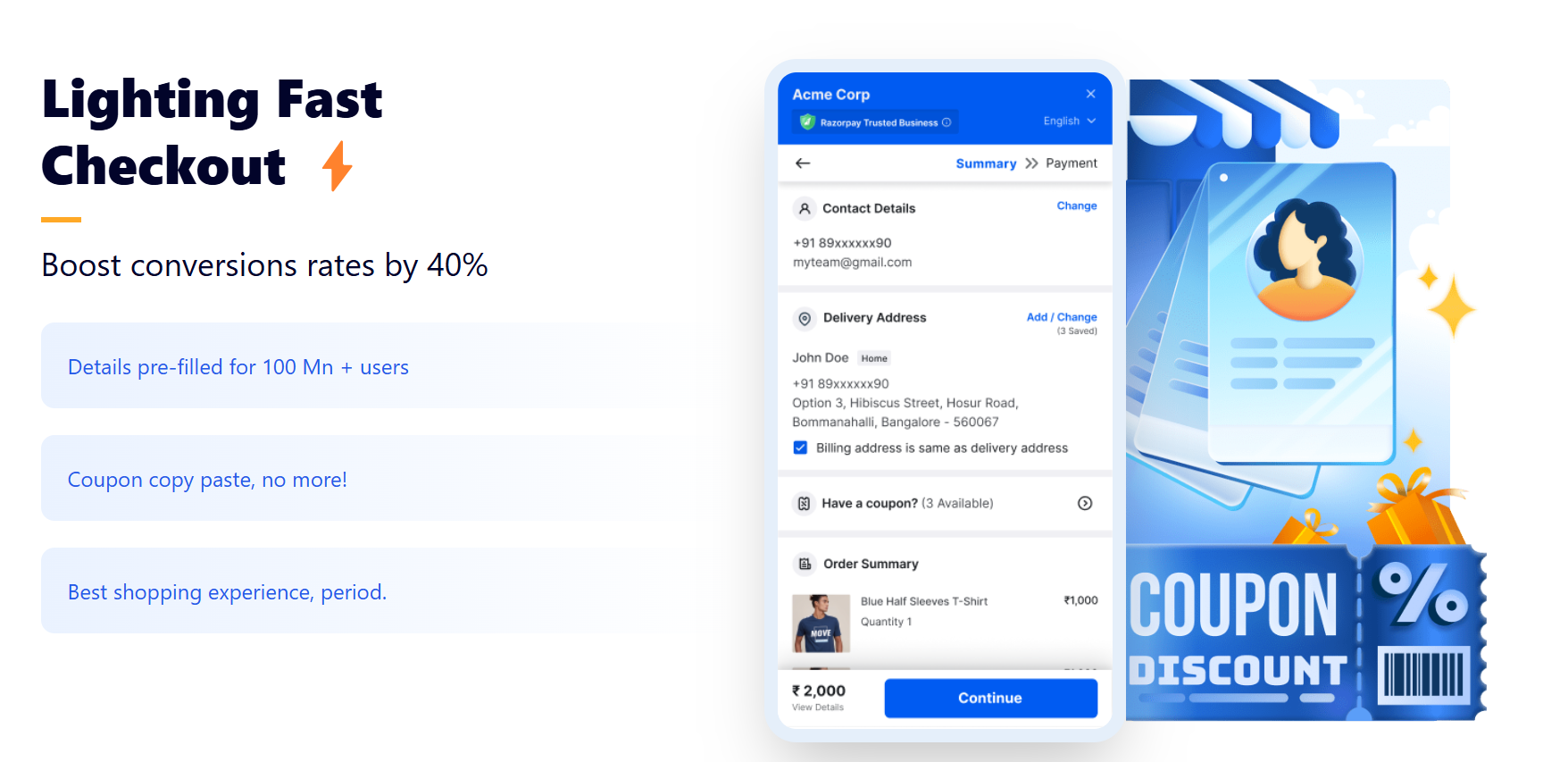
In the world of eCommerce, Return to Origin (RTO) is one of those terms that can give online sellers sleepless nights. It refers to a situation where the delivery of a package fails, and the order is sent back to the seller. This could happen for several reasons, and unfortunately, it’s a common issue that can hurt both profits and customer satisfaction. Let’s dive into what RTO is, why it happens, and, more importantly, how you can reduce its occurrence—particularly if you’re operating in India.
Table of Contents
What is Return to Origin (RTO)?
Return to Origin (RTO) happens when a package, despite being shipped, cannot be delivered to the customer and is returned to the seller. This isn’t just about the failed delivery; RTO involves added costs for both forward and reverse shipping. Plus, sellers may have to spend extra time and resources to inspect, process, and possibly restock the returned items.
From a customer perspective, RTO usually means waiting longer for refunds or exchanges, which can negatively impact their shopping experience.
What Happens When a Package Gets RTO?
When a package is marked as RTO, it goes through a specific process:
- Return to Seller: The courier company returns the undelivered package to the seller’s warehouse. The seller is typically responsible for the reverse shipping costs, which can sometimes double the shipping expenses.
- Inspection and Processing: Once received, the seller inspects the product to ensure it’s undamaged and resalable. If the product is damaged, the seller might have to bear the cost. If everything checks out, it may be restocked.
- Customer Notification: The seller informs the customer about the RTO, usually initiating a refund process. Sometimes, shipping charges or restocking fees are deducted from the refund.
- Re-attempting Delivery: In certain cases, if the issue is address-related, sellers may reattempt the delivery after getting the correct information from the customer. However, this usually happens if the customer proactively contacts the seller to correct the mistake.
Common Reasons for RTO
RTO happens for many reasons, and they can be grouped into customer-related, seller-related, and logistical factors.
Customer-Related Reasons:
- Incorrect or Incomplete Address: This is the most frequent cause of RTO. If the customer provides a wrong or incomplete address, delivery attempts will fail.
- Customer Unavailable: Sometimes, the customer isn’t available at the time of delivery, and after multiple failed attempts, the package is sent back.
- Refusal to Accept: Customers may refuse a package for various reasons—maybe they changed their mind, or the product didn’t meet their expectations.
- Fake Delivery Address: In rare cases, fraudulent customers provide fake addresses to avoid paying for orders.
Seller-Related Reasons:
- Product Mismatch: If the product delivered doesn’t match the description, the customer may return it.
- Damaged Product: A product damaged during transit can also lead to RTO.
- Delayed Delivery: If there’s a significant delay in delivery, the customer might lose interest and refuse the package.
Logistical Reasons:
- Courier Issues: Sometimes, the courier company itself may face issues in delivering the package.
- Incorrect Labelling: If the label on the package is wrong or illegible, the package may be misrouted.

Reducing RTO with Third-Party Checkout Tools
Fortunately, you can significantly reduce your RTO rate by using advanced third-party checkout solutions. These tools help ensure that the delivery details provided by the customer are accurate and reduce the risk of failed deliveries. Here are some top tools popular in the Indian eCommerce space:
1. Shiprocket Checkout (Formerly Fastrr)
Shiprocket Checkout is one of the leading tools in India. It verifies the customer’s phone number using an OTP (One-Time Password) and pre-fills their address details from a pre-existing database. This ensures that over 70% of customers can quickly complete their checkout process with accurate information.
For sellers, Shiprocket offers the option to incentivize prepaid orders by providing discounts and adding a small surcharge on COD (Cash on Delivery) orders. This tactic not only reduces the rate of RTO but also encourages more customers to choose prepaid payment methods, reducing the risk of order refusal at the doorstep.
2. GoKwik
GoKwik is another reliable solution. Like Shiprocket, it pre-fills customer addresses after verifying the phone number through OTP, cutting down on errors related to incorrect addresses.
GoKwik also lets sellers offer discounts for prepaid orders and charge an additional fee for COD orders. This nudges customers toward choosing prepaid options, which generally have a lower RTO rate compared to COD.
3. Razorpay Magic
Razorpay Magic is a new player in the checkout optimization space. With features like address auto-fill and OTP-based verification, Razorpay Magic ensures that the customer’s information is accurate and complete, reducing failed delivery attempts.
Like the other tools mentioned, Razorpay Magic also allows sellers to offer discounts on prepaid orders, thereby reducing the RTO rates associated with COD.
4. Ecom360
Ecom360 is another excellent checkout tool that helps prevent RTO by verifying customer phone numbers and pre-filling their address. By ensuring accurate customer data, Ecom360 makes it easier for couriers to successfully deliver packages on time.
Additionally, sellers can set up incentives for prepaid orders and charge extra for COD orders. Since prepaid orders are less likely to result in RTO, this is a crucial strategy for sellers who want to reduce their RTO rates.
Best Practices to Minimize RTO
Along with using advanced checkout tools, there are other strategies sellers can adopt to minimize RTO in eCommerce:
1. Use Address Verification Tools
Ensure that the customer enters the correct address by implementing address verification tools at checkout. This can be done by using address auto-complete features or third-party address validation services. These tools can flag errors in real-time, prompting customers to correct them before proceeding with the order.
2. Offer Flexible Delivery Options
Provide customers with options to choose a delivery time slot that works best for them. This can reduce the chances of the customer not being available when the delivery is attempted.
3. Send Clear Delivery Notifications
Keep your customers informed with SMS, email, and app notifications regarding their delivery status. This will ensure that they are aware of when the package is arriving, reducing the chances of missed delivery attempts.
4. Encourage Prepaid Orders
Offering discounts or incentives for prepaid orders and charging a small fee for COD orders can tilt the balance in favor of prepaid transactions. Prepaid orders are less likely to result in RTO, as customers are already invested in the purchase.
5. Analyze RTO Data
Keep a close eye on your RTO data to identify patterns. For example, if certain areas have a higher RTO rate due to incorrect addresses or customers not being available, you can work with your courier partner to optimize the delivery process for those areas.

Conclusion: The Key to Reducing RTO in Indian eCommerce
In India’s competitive eCommerce landscape, minimizing RTO is essential for profitability and customer satisfaction. By using advanced checkout tools like Shiprocket, GoKwik, Razorpay Magic, and Ecom360, and by following best practices like address verification and incentivizing prepaid orders, you can significantly reduce the likelihood of RTO.
Remember, every failed delivery isn’t just a logistical headache; it’s a financial drain. Reducing RTO can help you save on costs, keep your customers happy, and ultimately grow your business in the long term.
Looking to reduce your eCommerce RTO rates and boost profitability? Partner with Nade XP, your trusted growth studio. With our deep expertise in optimizing checkout processes and implementing effective strategies, we’ll help you streamline operations, increase prepaid orders, and enhance customer satisfaction. Let’s drive your eCommerce success—get in touch with Nade XP today and watch your business thrive!
FAQs
Yes, several costs can catch store owners off guard, such as transaction fees for payment processing, additional fees for custom plugins or themes, charges for email or SMS marketing integrations, shipping costs (including international), and expenses related to returns or refunds.
Yes, offering discounts or incentives like free shipping can help recover abandoned carts. However, this should be done carefully to avoid training customers to abandon carts deliberately to receive discounts. Consider personalized offers based on the customer’s behavior or cart value.
Yes, SureCart is particularly well-suited for digital products and software. It offers license key management, validation, and activation API, making it ideal for software distribution. Additionally, SureCart supports automated billing for subscriptions and other recurring payments.
No, you don’t need coding knowledge to start an eCommerce store. Platforms like Shopify and WooCommerce offer user-friendly interfaces that allow you to set up and customize your store without any coding skills. You can choose themes, customize your store’s appearance, and add products with ease. For more advanced customization, you can hire a developer, but most users find the built-in tools sufficient to run their online business.
Yes, since SureCart runs on WordPress, you will need a reliable hosting provider. However, SureCart manages eCommerce-related processes on its servers, reducing the load on your WordPress site, so you won’t need to worry about performance issues typical of eCommerce-heavy sites.
Use tools like Google Analytics to analyze user behavior and identify drop-off points in your checkout process. Heatmaps, customer surveys, and exit-intent pop-ups can also provide insights into why customers are not completing their purchases.
To reduce payment gateway charges, compare different providers to find one with the lowest fees for your sales volume and preferred payment methods. Also, consider offering multiple payment options to reduce dependency on a single gateway and potentially negotiate better rates based on your transaction volume.
Shopify’s checkout is already streamlined, but you can further optimize it by offering guest checkout, reducing the number of steps, and ensuring your store is mobile-friendly. Consider using Shopify’s “Shop Pay” for a faster, one-click checkout experience.
WooCommerce allows you to customize the checkout process extensively. You can simplify fields, remove unnecessary steps, and optimize for mobile. Plugins like “Checkout Field Editor” let you customize the checkout form to suit your needs.
Focus on organic traffic by investing in SEO, content marketing, and social media strategies. Leverage free tools and platforms for email marketing, create a referral program, and collaborate with influencers who align with your brand to drive traffic at a lower cost.
Shopify offers built-in features for abandoned cart recovery emails. You can automate emails to be sent to customers who leave items in their cart. Go to “Settings” > “Checkout” and configure your preferences for abandoned cart recovery emails.
WooCommerce does not have built-in abandoned cart recovery features, but you can use plugins like WooCommerce Cart Abandonment Recovery or Retainful. These plugins help you create automated emails and track abandoned carts to re-engage customers.
WhatsApp and SMS can be powerful tools for recovering abandoned carts, especially in regions where these platforms are widely used, like India. These methods offer a direct line to customers, allowing personalized communication, answering questions, and even providing exclusive discounts to encourage a return to the cart.
SureCart’s free plan includes essential features but charges a 1.9% transaction fee and has limits on abandoned cart recoveries and upsells. Paid plans start at $19/month. WooCommerce is free to start but requires paid plugins and hosting. Shopify offers a straightforward pricing model starting at $29/month, but with additional transaction fees unless using Shopify Payments.
SureCart is an excellent choice if you are selling digital products, memberships, or subscriptions, thanks to its automation features and ease of use. However, it’s fairly new compared to WooCommerce and Shopify, so if you need extensive marketing integrations or POS support, you might consider Shopify or WooCommerce.
Yes, SureCart is an excellent option for digital products and services. It offers flexibility with various pricing models, such as subscriptions, pay-what-you-want options, trial period purchases, and installment plans. If you’re selling digital goods like courses, consultations, or downloadable content, SureCart provides a seamless checkout process and saves on recurring fees like those charged by Stripe.
RTO costs refer to the expenses incurred when a product is returned by the customer to the seller. They can be reduced by offering accurate product descriptions, clear sizing charts, and high-quality images to minimize returns. Also, consider using automated tools to verify phone and addresses to avoid delivery failures.
Some effective strategies include simplifying the checkout process, being transparent about all costs (including shipping), offering multiple payment options, optimizing your website for mobile devices, and using retargeting techniques like abandoned cart emails and SMS messages.
Some popular plugins include CartFlows for optimizing the checkout process, YITH WooCommerce Recover Abandoned Cart for email recovery, and TrustPulse to build social proof. These tools help in reducing abandonment rates by enhancing the user experience.
SureCart is a WordPress plugin designed for digital products and subscriptions, offering features like subscription billing automation and license key management. WooCommerce is a versatile, open-source plugin also for WordPress, ideal for physical products with a wide range of plugins but requires more setup. Shopify is an all-in-one platform with robust marketing integrations and ease of use but comes with higher fees and limited customization compared to WordPress-based solutions.
Important KPIs include cart abandonment rate, recovery rate, conversion rate after recovery efforts, click-through rate (CTR) on abandoned cart emails or messages, and average order value (AOV) from recovered carts. Regularly tracking these KPIs will help you gauge the effectiveness of your strategies.
The primary costs include domain registration, platform fees (like Shopify or WooCommerce), hosting fees, payment gateway charges, and marketing expenses. Additionally, you should account for costs like website development, customization, shipping, returns (RTO), online store maintenance, and site security.
SureCart’s primary limitations include its limited selection of payment gateways and lack of POS system integration. Additionally, multicurrency support is not yet available, which could be an issue for international sellers. While the platform is great for getting started, more advanced eCommerce stores might find the lack of features like bulk editing for physical products and limited marketing integrations to be restrictive.
The average cart abandonment rate across all industries is around 60-70%. However, what is considered “good” depends on your industry. If your rate is higher than this average, it could indicate areas for improvement in the shopping experience.
Cart abandonment occurs when a potential customer adds items to their online shopping cart but leaves the website without completing the purchase. It’s a critical metric for eCommerce businesses as it directly affects sales and revenue.
Shopify charges a monthly fee and transaction fees, while WooCommerce is free but requires hosting, domain, and additional plugin expenses. SureCart runs on WordPress and charges based on subscription plans with additional fees for higher volume or advanced features. Each platform’s cost will vary depending on store size, sales volume, and specific needs.
SureCart’s free plan limits you to 50 abandoned cart recoveries per month, 1 order bump, and 1 one-click upsell. Additionally, there is a 1.9% transaction fee on the free plan, which may add up depending on your sales volume.
There are several apps on Shopify that can help, such as Privy, Klaviyo, and ReConvert. These apps offer features like exit-intent pop-ups, retargeting, and automated email or SMS campaigns to re-engage potential customers.
WooCommerce and Shopify are both strong contenders for selling physical products. WooCommerce offers more customization and is cost-effective if you are familiar with WordPress. Shopify excels in ease of use, integrated shipping, and POS support, making it a good choice for those looking for a turnkey solution.
If you have a limited budget and are familiar with WordPress, WooCommerce may be the best option due to its free core and the availability of cost-effective plugins. SureCart’s free plan is also a good choice for digital products, but keep in mind the transaction fee. Shopify is more expensive, but it offers a lot of built-in features that might save you time and effort in the long run.
SureCart is ideal for businesses selling digital goods, subscriptions, or services like consultations. It’s a great fit for small businesses, digital content creators, and service-based businesses. However, if you are a larger business needing advanced features, like POS systems, extensive payment gateway options, and multicurrency support, other platforms like Shopify or WooCommerce might be a better choice.
There are several reasons for cart abandonment, including unexpected shipping costs, complicated checkout processes, lack of trust or security, slow website performance, and limited payment options. Understanding these reasons helps in creating strategies to reduce abandonment rates.











